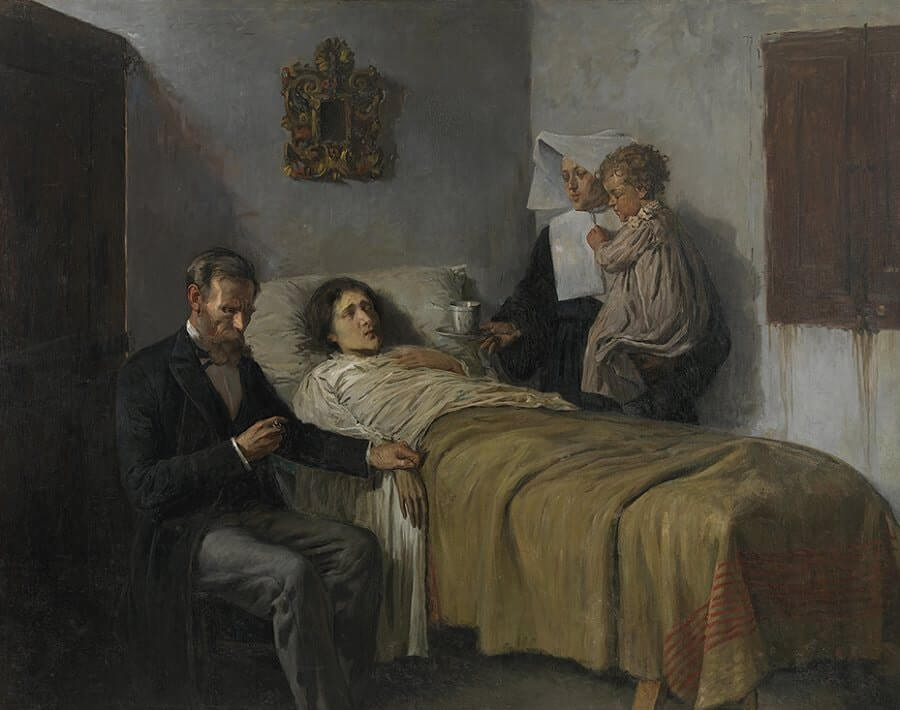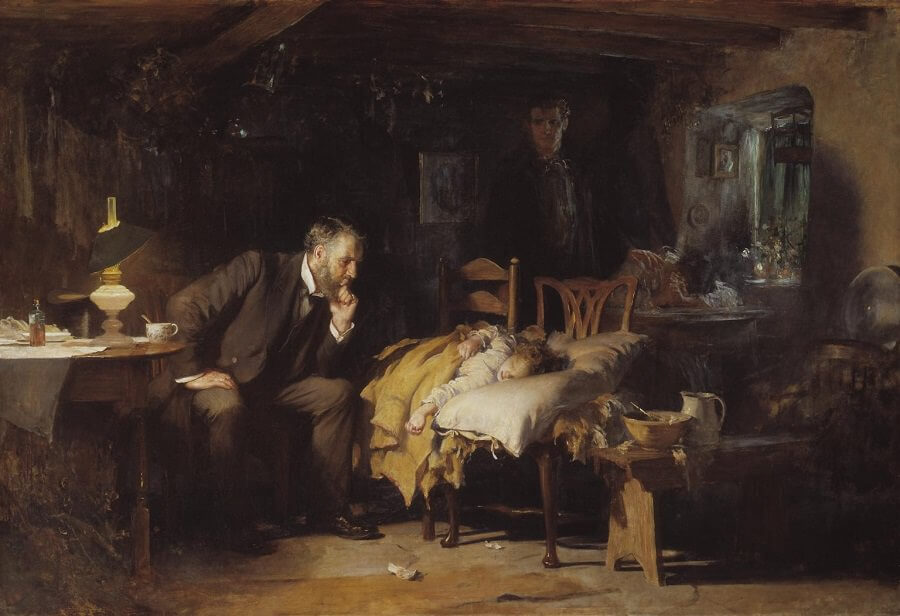Science and Charity, 1897 by Pablo Picasso

Picasso painted Science and Charity at age 16. The painting is considerably larger (almost two by two and a half meters) and equally stilted. With whatever its shortcomings it was thought sufficiently impressive to deserve an honorable mention when shown at the Exposicion General de Bellas Artes in Madrid in the spring of 1897, and a gold medal in provincial Malaga shortly afterwards. Equipped with a portentous allegorical title invented by Picasso's father Don Jose, who suggested the subject and posed for the doctor, it went one better than First Communion in supplementing a pious motif with the irresistible pathos of a full-dress deathbed scene. Deathbed scenes - especially scenes of expiring mothers - were popular all over Europe in the late nineteenth century and several pictures by contemporary Spanish artists have been suggested as sources for Science and Charity. But it is also likely that Picasso - or Don Jose - had seen a reproduction of Luke Fildes's The Doctor, a theatrically conceived, moralistic composition which enjoyed phenomenal celebrity when it was shown at the Royal Academy in London in 1891.

The photo-engraving published by Thomas Agnew and Sons in August 1892 sold in enormous quantities at home and abroad and was often to be seen displayed in doctors' waiting-rooms. By a curious coincidence, Don Jose, who was nicknamed 'the Englishman' because of his height and looks, resembled the doctor in Fildes's painting, so father and son may have felt a special attraction to it. Whatever its source, Science and Charity, like First Communion, is a late nineteenth-century anecdotal genre painting through and through, not a painting in the mode of seventeenth-century Spanish realism and not an exercise in neoclassicism.
Again, Picasso reveals his instinct for the 'right' style.
















